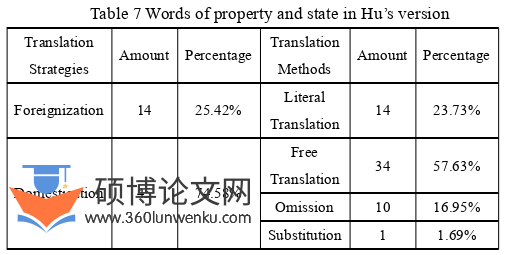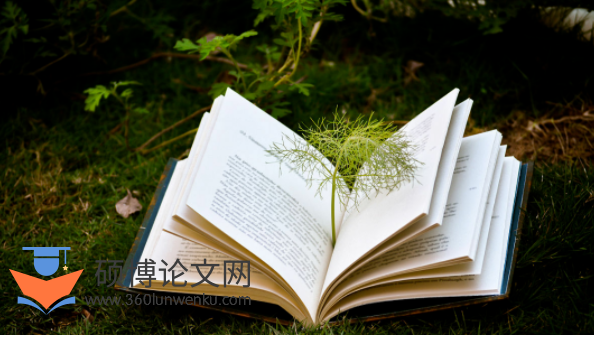本文是一篇英语论文,笔者认为在关联理论视角下,对于不同类别的方言词,译者需考虑读者的不同认知环境和各类方言词的特点,传达给读者容易理解的语境信息,采用不同的翻译方法,从而增强语境效果,减少读者的推理努力,最终达到最佳关联。
Chapter One Introduction
1.1 The Objectives and Significance of This Study

英语论文怎么写
Si Shui Wei Lan is a masterpiece of Sichuan dialect novel,and a large number ofscholars have studied its artistry,character analysis,history,film and televisionadaptations,etc.Still,there is a lack of research on its English translation.With theincreasing demand for Chinese culture to go global,the need to study Chinese dialectliterature has intensified.This novel is rich in Sichuan dialect words and has a deepliterary value that makes it well worth investigating.
This thesis aims to deepen the understanding and recognition of the value ofChinese dialect literature.As one of the representative works of the Sichuan dialect,SiShui Wei Lan is a reflection of the charm of Chinese culture and the essence oftraditional culture.Theoretically,this thesis is beneficial to further understand thepractical application value of Relevance Theory in dialect translation.There are fewstudies on the English translation of Si Shui Wei Lan,including the study of translator’s voice and translation morphology,the study of mistranslation,the study oftransmission,the study of translation comparison,and the study of appellationtranslation,but there is no systematic study of all dialect words.Therefore,this thesisalso provides a new perspective for the English translation of Si Shui Wei Lan andfocuses on all the dialect words in the text.In addition,this study also hopes tocontribute to speeding up the pace of Chinese cultural communication with the wholeworld.
..........................
1.2 Research Methods
This thesis uses three methods:the literature research method,the case study method,and corpus method.
The literature research method is roughly divided into five steps.First,a researchtopic on literary dialect translation is proposed,a group discussion is held,and finally,the topic is established with the support of the supervisor;second,Li Jieren's novel SiShui Wei Lan is determined as the research object,and the literature research methodand the case study method based on the self-constructed corpus are designed as theresearch methods,and the relevance theory is used as the research theory for the study.Third,to collect literature on the English translation of Si Shui Wei Lan,dialecttranslation,and relevance theory,and to order books on the original novel and itsEnglish translation,dialect dictionaries,and dialect vocabulary studies;fourth,toorganize related literature;and fifth,to conduct a literature review.
Corpus method:first,find the location of all 314 dialect words in the originalnovel and the two English translations.Second,use the Excel spreadsheet tool toimport the original text and English translation associated with each dialect word intoit.Third,adjust the format,mark the different translation methods with differentcolors,and make statistics.The corpus built in this thesis is mainly applied toquantitative analysis,rapid data collection and processing,statistical word frequency,and correlation analysis to provide more comprehensive statistical results.At the sametime,based on the quantitative statistical results,the foundation for qualitativeanalysis and case study analysis is laid.
...............................
Chapter Two Literature Review
2.1 Previous Studies on Li Jieren and Si Shui Wei Lan
In the history of modern literature,there is a literary master who has beenignored by the public.Cao Juren highly praised his novels as“his achievements arestill above Mao Dun and Ba Jin”.Guo Moruo called him“China’s Zola”.Even Ba Jinhimself said:“Only he is a historian of Chengdu,and the past Chengdu lives under hispen”.The writer is no one else.He is Li Jieren,who studied in France in his earlyyears and settled in Sichuan all his life.Li Jieren(1891-1962),formerly known asJiaxiang,was born in Huayang County,Sichuan Province(now part of Chengdu).Heis the founder and forerunner of modern Chinese historical novels.He is also arepresentative figure of modern Sichuan and Chengdu regional culture.As a uniquewriter in the history of modern Chinese literature,Li Jieren’s works play an extremelyimportant role in the evolution of Chinese novels.Li Jieren created a series of shortsin his early days.These novels either expose the dark social phenomenon of warlords,or describe the bitter life of the people in China’s closed and barbaric inland urbanand rural areas,or reflect the ugly reality of demons,corruption,and perverting thelaw in the economic circles of Chengdu in the late Anti-Japanese war.In May 1935,Li Jieren resigned from Minsheng Industrial Company,ended his nearly ten-yearwork in the educational field,and began to devote himself to novel writing.He hassuccessively created three volumes of historical novels called“Dahe Trilogy”,namelySi Shui Wei Lan,Bao Feng Yu Qian,and Da Bo.With its magnificent momentum andrare scale,“Dahe Trilogy”plays an essential role in the Chinese literary world.Among them,the first one,Si Shui Wei Lan,has the highest artistic achievement andthe most far-reaching influence.It is not only an artistic masterpiece in the history ofmodern Chinese literature but also a representative work that lays the writer’s positionin the literary world.It can be seen that the author’s rich life experience,writingmaterials,and his surging creative passion and enthusiasm represent Li Jieren’s highlevel of reflecting the people’s daily life and human state in the Western Sichuan plainon the eve of the revolution of 1911.
................................
2.2 The Two English Versions and the Translators
In the early 1960s,with the recommendation of Fu Lei,a famous translator,HuZhihua completed the English translation of Si Shui Wei Lan.Because the language ofthe novel is full of local color and very vivid,Hu Zhihua made a lot of preparationsbefore writing and translating.It not only has an in-depth understanding of the erabackground and social situation of the novel.In addition,through in-depthinvestigation,I have understood a large number of dialect words in the book.In 1979,at the recommendation of Mr.Qian Zhongshu,Hu Zhihua transferred to Chineseliterature.Later,Mr.Yang Xianyi asked him if he had any translation to recommend,and Hu Zhihua handed over the English version of Si Shui Wei Lan to Mr.Yang.Mr.Yang Xianyi then handed the translation to Luo Liang,the head of the English groupat that time,but due to space constraints,he could only publish the second half of thetranslation of the novel.Therefore,in 1981,the English versions of chapters 5 and 6of Li Jieren’s novel Si Shui Wei Lan were published in the 11th and 12th issues ofChinese literature.Then in 1990,he published Ripples Across Stagnant Water,the fulltext of the English translation of Si Shui Wei Lan in Chinese literature.
Hu Zhihui(1929-)is a famous Chinese mainland translator,writer,and Professor.After graduating from the English Department of St.John’s University in Shanghai in1952,he engaged in teaching at the Beijing Institute of foreign languages.Hetranslated a large number of Russian,English,and American literary works.Eightyears later,Professor Hu worked as an editor at the Institute of Chinese Literature ofthe Chinese Academy of Social Sciences and completed a series of papers oncomparative literature and the art of translation.
.............................
Chapter Three Theoretical Basis...........................................11
3.1 An Introduction to Relevance Theory........................................11
3.2 Relevance Principle and Optimal Relevance................................12
3.3 Ostensive-inferential Communication....................................12
Chapter Four A Study of Dialect Word Translation in Si Shui Wei Lan.......................16
4.1 Classifications of Dialect Words.................................16
4.1.1 Words of Material...........................................16
4.1.2 Words of Appellation...........................................16
Chapter Five Conclusions....................................43
5.1 Findings................................43
5.2 Limitations.......................................45
Chapter Four A Study of Dialect Word Translation in SiShui Wei Lan
4.1 Classifications of Dialect Words

英语论文参考
This thesis classifies dialect words according to their basic meanings,referring tothe Sichuan Dialect Dictionary,Chengdu Dialect Dictionary,and Sichuan dialectvocabulary studies and considering the scientific,systematic,scalable and applicableprinciples.The specific categories are as follows.
4.1.1 Words of Material
Material words refer to words related to clothes,food,equipment,vehicle,bodyparts,houses,astronomy,geography,etc.For example,Each region has a differentname for the same means of transportation.In Sichuan,the wheelbarrow is called“叽咕车”or”鸡公车”because this means of transport makes a noise when it is used.Another example,due to different food cultures in different regions,the commonname of each restaurant is different.Ordinary Chinese restaurants that can cook at anytime are called“红锅饭店”in Sichuan.A“红锅”is a pot that is burned red,whichmeans it can cook at any time,so it is called“红锅饭店”.
In Si Shui Wei Lan,according to the author’s statistics,there are 63 materialwords in total.All the material words are shown in the table in Appendix 1,where theauthor categorized the words according to different translation strategies.
.................................
Chapter Five Conclusions
5.1 Findings
According to the different meanings of dialect words,the author divides theminto seven categories:words of material,words of appellation,words of society andculture,words of property and state,words of speech and movement,words ofapproach and degree,and words of time and direction.The two translated versionswere then reclassified according to the differences in English translation strategiescorresponding to different categories of dialect words—foreignization anddomestication,and the differences in the seven translation methods under theguidance of domestication and foreignization strategies—literal translation,transliteration,free translation,omission,substitution,amplification,and explanation.
After analysis,it is found that,on the whole,both translators tend to adoptdomestication strategies,with Hu’s version accounting for 71%and Sparling’s versionaccounting for 61%;Second,literal translation and free translation are the highestamong the seven translation methods.For literal translation,Sparling’s version is 9.24%more than Hu’s version,and for free translation,Hu’s version is 10.83%morethan Sparling’s version;Third,among the other five translation methods,Hu Zhihuiuses explanation,transliteration,and amplification less frequently than Sparling,while the frequency of omission is higher than Sparling,and the frequency ofsubstitution is the same for two translators.Besides,they have their own style fordifferent types of dialect words.In words of material,Sparling uses transliteration andexplanation more frequently;In words of appellation,Hu’s use rate of amplification is0%,and the use rate of the two translators in other methods is quite similar;In wordsof society and culture,both translators did not use substitution,and Hu did not useamplification,only a small amount explanation;In words of property and state,Hudoes not use amplification and explanation and the usage rate of literal translation ismuch less than Sparling’s,Sparling does not use substitution and explanation and theusage rate of omission is only half of Hu’s;In words of speech and movement,neithertranslator used transliteration,substitution,and amplification;In words of approachand degree and words of time and direction,both translators used only three methods,literal translation,free translation,and omission.
reference(omitted)
